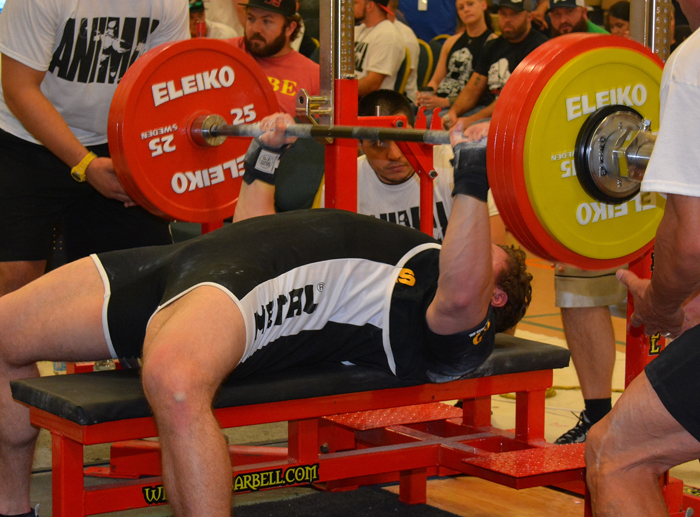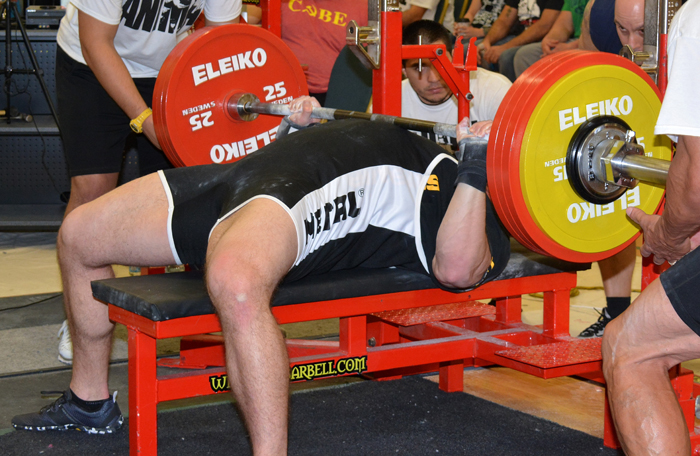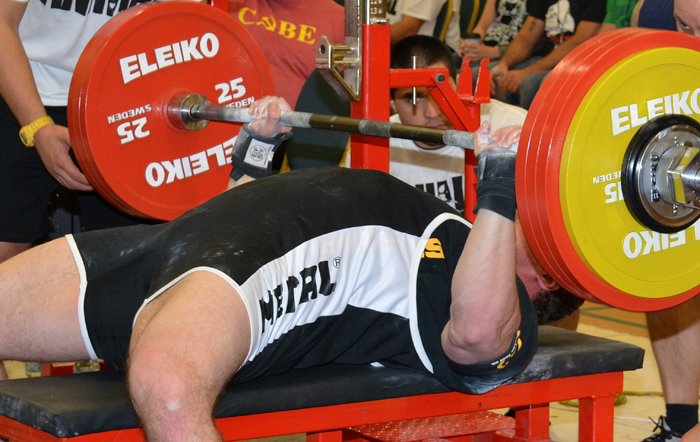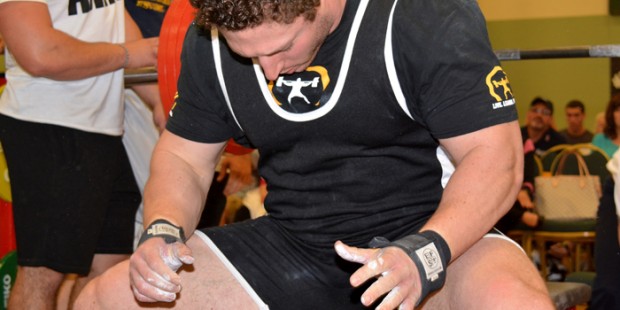
For bench only lifters, there are differing ideas on how to train for a meet, but some considerations need to be made for the individual lifter. In this article, I'll examine some viewpoints on the bench press competition and look at what can be done to accommodate different situations.
Why bench only?
We first need to know why a particular lifter is or wants to compete in bench only competitions. Is the lifter usually a three-lift competitor? If the answer to that is yes, we can ask the following questions:
- Why is the lifter moving to the bench only competition?
- Is it due to a lower body injury but a desire to compete while rehabbing?
- Does the lifter want to compete in a bench only meet in the short term but over the long term, he still plans to compete mainly in three-lift meets?
With these questions answered, we can then figure out programming. The reason why the lifter wants to compete in a bench only meet can greatly influence the programming. For example, in the event of injury, lower body training would, for the most part, be rehabilitative in nature. With a lifter who is truly planning to compete in three-lift meets but for some reason wants to do a bench only meet, some lower body training to maintain strength may be included but at lower volumes. If the lifter has a legitimate shot at setting a record (and I'm referring to real records here) or winning a large bench only meet, lower body training may be performed in very low intensities or volumes or the exercise selection may not include stressful lifts.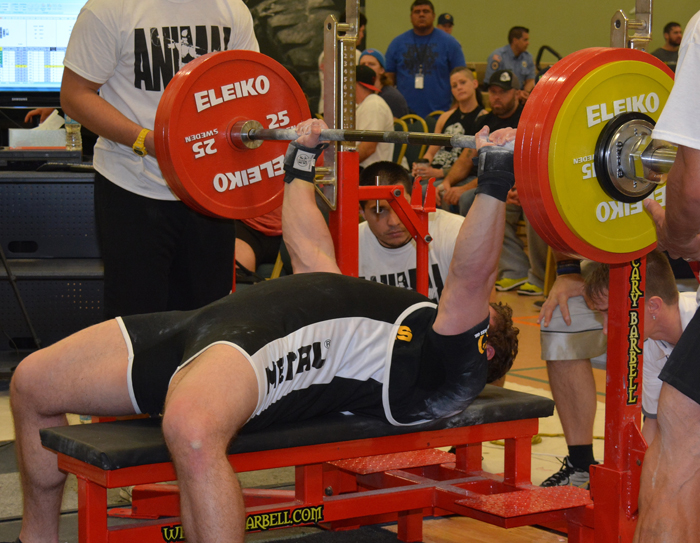
In the event of a true bench only competitor, how much lower body training even needs to be performed? Will the lower body training positively influence the bench press? If there isn't any good reason to keep the lower body training in the template, it could be omitted completely. Remember that all efforts should advance the competitive lift.
Exercise selection and programming considerations
When examining the training of many bench only competitors, there are differences in ideology. Generally, many Western lifters focus on performing a large amount of bodybuilding style accessory work while lifters in the East focus on performing a larger amount of work in the actual bench press. Neither of these is technically right or wrong and both have their uses. Again, all that matters is the competitive results.
However, some considerations should be made. Will the lifter compete in a shirt or raw? In the past, this may not have made much difference, but nowadays even the IPF-approved single ply shirts are aggressive enough to warrant technical practice. While on the subject of technique, does the lifter possess a level of proficiency? If so, is he weak in certain parts of the movement that would warrant using specialized exercises? A lifter who possesses a great deal of strength in all of the involved musculature but has terrible technique should probably focus more on practicing the competitive movement with competition width grip and, in some cases, commands.
To dig a little deeper here, I'll use theoretical examples of two different lifters with different individual needs.
Lifter A
Lifter A is considered above average but definitely top level. He could be a national level competitor but isn't quite good enough to place internationally or professionally, depending on the style of lifting. He competes equipped, and as far as technical proficiency, he is able to bench very well in the shirt. He exhibits no true sticking point but will miss only because he is simply not strong enough to make the attempt. He lacks raw strength, and a great deal of discrepancy exists between his shirted bench and his raw bench. He is weak off the chest raw. His ultimate goal is to compete in three-lift meets, but he's choosing to do a local bench only meet to try for a new PR.
Lifter A would benefit from the following:
- More raw work focusing on the weaknesses he displays: For this particular lifter, focusing on full range, raw benching can be beneficial. Using variants of full range bench pressing or other pressing exercises such as incline bench may be beneficial to strengthen the musculature involved. Work focused at the weak range of motion such as isometric holds (IE pauses) can be implemented as well because some individuals who are weak off the chest may display weakness in the isometric contraction between the yielding and overcoming phases of a lift.
- Enough shirted work to maintain technique: This can change approaching the meet. In general, a lifter would do as much work in the shirt as necessary to maintain technique and then transition to more technical work to peak.
- Enough lower body work to maintain strength but not draw away from being able to PR: With this particular lifter, he still ultimately plans to compete in three-lift meets. During the time that he's training for this bench only meet, he may choose to pull back some of the volume, intensity or frequency of his lower body training. How much he pulls back will depend on this particular lifter and his training protocol. For a lifter who is generally high frequency, this could mean dropping one or two sessions of squatting or deadlifting to accommodate for an increase in bench press volume, intensity or frequency. With lower frequency lifters, the volume or intensity may be similarly tweaked. While a lifter may be able to still PR without adjusting this way, we'll use the theoretical example that this lifter is trying to hit a certain number that would most likely be unattainable if training with a typical three-lift style of programming and he wants to take no chances at hitting a certain PR.
Lifter B
Lifter B comes from a bodybuilding background and is very strong throughout the involved musculature. He displays a great deal of strength in a variety of pressing exercises but could be described as a “jack of all trades.” His bench press technique leaves much to be desired. He is unfamiliar with competitive commands and his setup is sloppy at best. He plans to compete raw and could be very competitive at a high level. He has no plans of competing in anything except the bench press.
Lifter B would benefit from the following:
- More technical work: In this case, an increased amount of practice of the competitive exercise would prove beneficial. Being able to learn how to correctly set up and perform the lift would be the best way to further his progress. He could try using a greater frequency with lower intensities and focus on technical mastery. While a greater frequency isn't necessary, the lifter can't be allowed to fatigue and revert back to using suboptimal motor patterns. The focus needs to be on motor learning.
- Lower volumes of accessory work and variations: This lifter already possesses a great deal of strength but needs to direct it toward the competitive exercise. Becoming stronger locally won't have much effect on his results. In the case of preventative work for injuries, he could include movements to focus on this, but the volume doesn't need to be great or of high intensity.
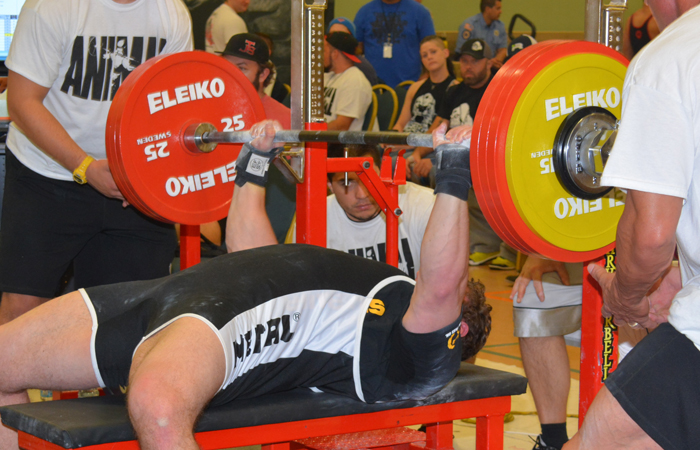
- Low intensity lower body work: This lifter doesn't have any reason to do anything that will be intensive and draw away from his recovery. If he is concerned with aesthetics, low intensity movements that would train for hypertrophy could be included far out from competitions, but they would need to be phased out as the contest nears so they don't take away from his ability to direct his energy toward bench pressing.
Conclusion
When programming, we need to consider what will direct someone toward the desired result in competition. Some lifters may need more technical work while others may simply need to get stronger.
Recently, I had an email exchange with a lifter who was being coached by Boris Sheiko. He said the first thing that Sheiko had advised him to do was get his technique to the point where it was automatic and then focus on getting stronger. His technique needed to be something that became innate and didn't require thought. This fits many lifters' needs. Many people are, without a doubt, strong, but they don't possess the technical proficiency to produce on meet day. On the other hand, there are lifters who have practiced the movements enough but haven't put in enough time to address weak points. In this case, breaking down what causes certain discrepancies can be useful.
Remember that events with a directed outcome need to be trained accordingly. When focusing on one lift, the other lifts may need to be put on the back burner. The ability to adapt and recover is finite, and including more than is necessary could possibly jeopardize the end goal.
Photos courtesy of Ken Richardson









